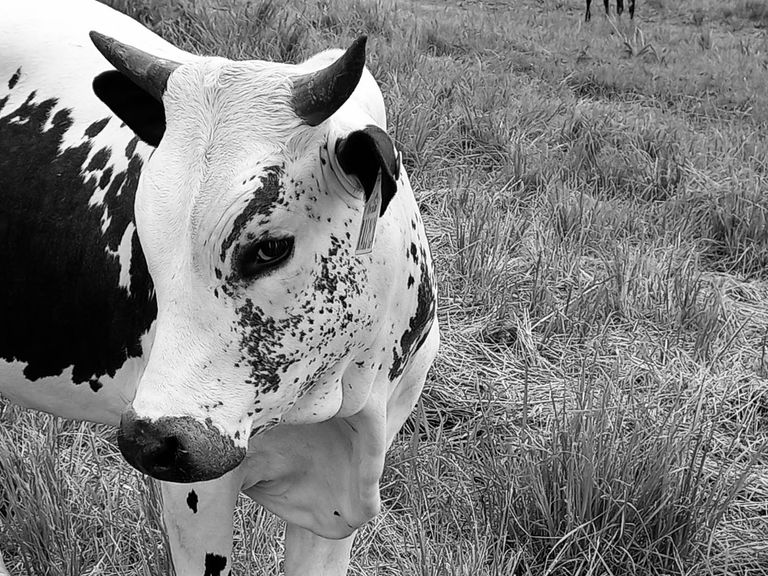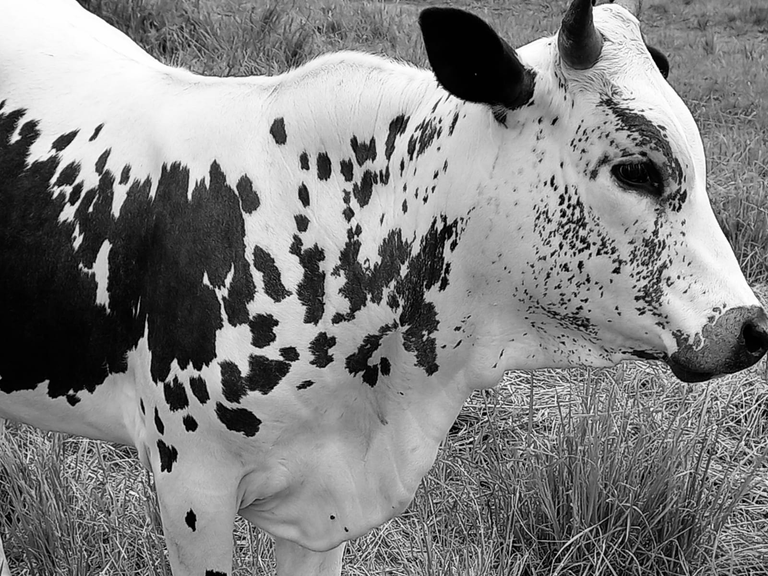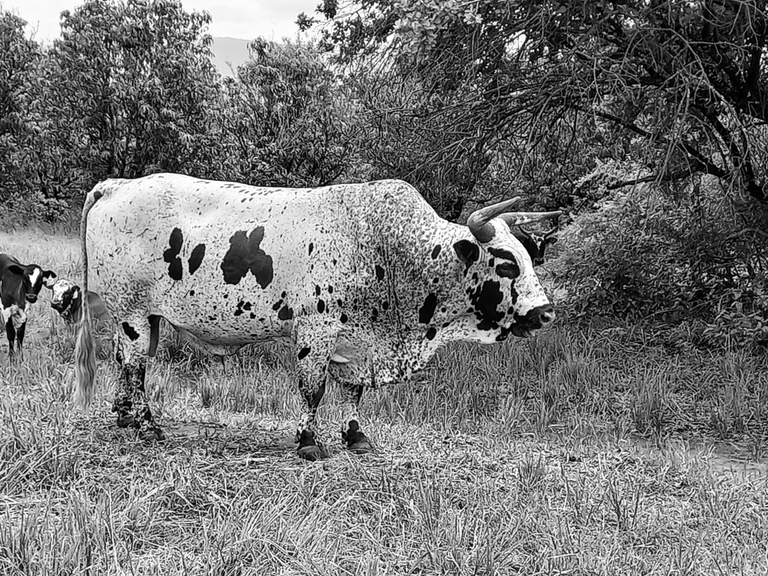This is my entry for the #monomad challenge. To enter or view the original challenge post click here
Throughout the ages, South Africa has designed its own unique flavor with a culmination of various integrated cultures. The heritage of this country is one of a richly diverse nature rooted in universal origins. And when it comes to indigenous livestock, it is no different.

Nguni cattle are a breed like no other. This indigenous South African breed of cattle stems from the hybridization of multiple Indian and later European cattle breeds acquired by the Nguni people during their migration from the north to the south of Africa.
The most defining characteristics of these cattle are their sleek and glossy mottled skin, black noses, and varying horn shapes. And although these cattle are mostly bred for meat, their skins have become a very sought-after commodity worldwide.

Over the years Nguni has adapted to function, breed, and thrive in the harsh conditions provided by the African bushveld, and they are known to have a good fertility rate and a resistance to diseases and can tolerate the extreme heat of the African sun. This is truly a case of 'form follows function'. On a continent where every aspect of nature, such as grazing conditions, climate, parasites (internal and external), and predation is designed to kill you, it is worthwhile to have livestock that is resilient, strong, adaptable, and fertile.

They are medium-sized cattle with bulls easily weighing between 500kg - 600kg and cows between 300kg - 400kg each.
Despite their aggressive appeal, these cattle are a placid breed, wonderful to work with, and admirable for their aesthetic appeal.
These pictures of the Nguni calf and Bull were taken by myself in Limpopo, South Africa.
You can read more about the Nguni cattle and its origins here and here
Have not seen this breed of cattle in years, interesting to learn more about the history and how they arrived in this region.
They are photogenic in black and white, it does them justice, well done!
@tipu curate
To me they are gorgeous in any color :D
They are pretty cool and such a part of our history.
Upvoted 👌 (Mana: 32/52) Liquid rewards.
They are truly a beautiful creature! Those unique markings. Lovely photos Claudette. And how is the faraway @breezin?
HEY!!! I looked you up the other day but saw you haven't been online in a while. I am surviving, I guess that's all we can ask for LOL
I ended up getting some Nigerian dwarf goats, the first baby was born a short while ago. It was a ram, but I managed to find him a home where he could be a pet and not food
YAY for goats. The dwarf goats are adorable. Glad you could find the little guy a home. They are always the sad part of goat life
It sure is :(
The little bugger was busy climbing a tree today LOL
he is so entertaining.